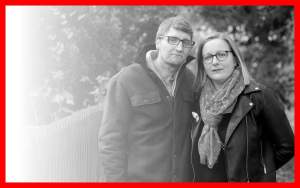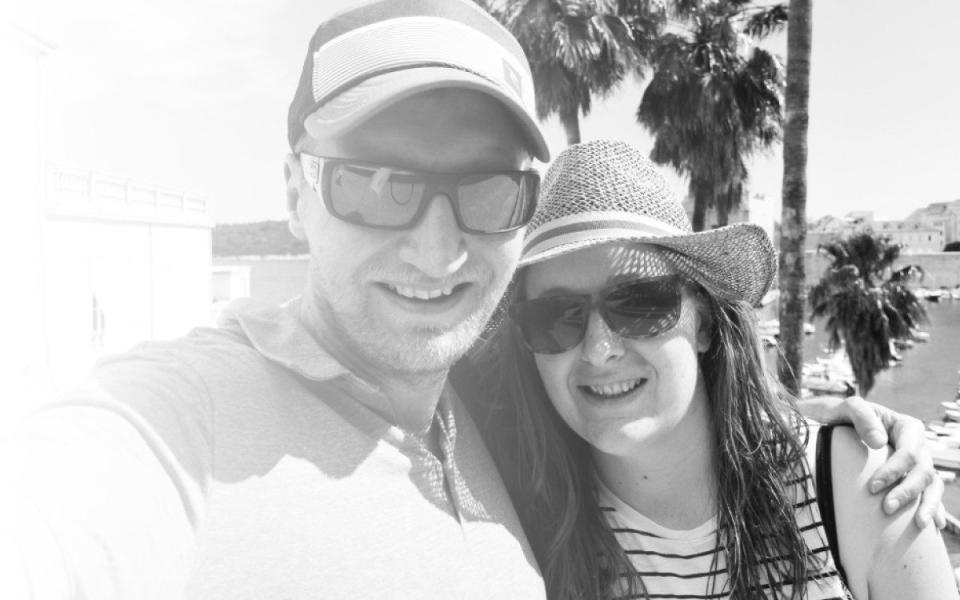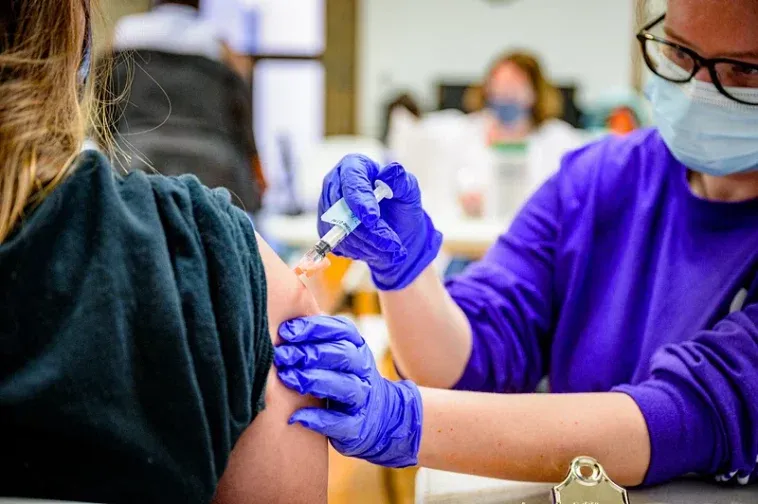
(Yahoo) Kate Scott was called by the hospital three times to say goodbye to her husband. Three times she dashed to his bedside expecting him to die at any moment. Three times she thought she would be widowed, leaving her to bring up their two young children, the youngest just a baby at the time, on her own and without the “love of her life”.
But her husband Jamie was nothing if not a fighter. He pulled through and survived the “catastrophic” bleed on his brain. He is not, however, the same man. He can no longer hold down the job he had; can no longer follow complex conversations; his sight is impaired and the simplest things – such as reading a book – are no longer quite so simple.
“We are the luckiest of unlucky people,” says Kate. “We have both gratitude and sorrow. We are grieving for what we have lost but I am so grateful that each morning I can wake up next to him.”
He is now a test case; the first person to lodge a claim for damages against AstraZeneca in a landmark legal action that – should he win – could pave the way for hundreds of claims and damages that will run into the tens, if not hundreds, of millions.
Jamie was 44, fit and healthy and a keen 10km runner, when his life (and by extension Kate’s and their boys’) was turned upside down. A little over two years ago – on April 23 2021 – Jamie did what so many other Britons did. He went to his local GP clinic in the West Midlands, where the family live, for a Covid jab. It was in the relatively early days of the vaccine rollout and the UK was pushing hard the AstraZeneca vaccine developed at Oxford University.
There had been warnings starting to emerge of possible blood clots associated with the vaccine – two weeks before Jamie had the jab, the UK had stopped giving the AstraZeneca vaccine to the under-30s. But Jamie had wanted to do his bit and get vaccinated so he and the children could visit his elderly father. He wasn’t having the jab for himself. For a man his age and in excellent health, Covid-19 posed little threat. The AstraZeneca vaccine proved to be near fatal.
“We weren’t worried about ourselves,” says Kate, “We were fit and healthy. We don’t smoke, we don’t really drink.”
Jamie is sanguine. “I was just doing what the Government was telling us,” he says.
When he went for the first jab, Jamie had asked for Pfizer; he had been aware vaguely of the possible risk of the Oxford-AstraZeneca vaccine. But there was no Pfizer available. The Government had bought millions of doses from AstraZeneca.

People pose with syringe with needle in front of displayed AstraZeneca
For 10 days after the first dose, Jamie was fine. He went home and went about his normal life. Then, on the morning of May 3, his – and the family’s – life fell apart. Kate recalls what happened next. Jamie complained of tiredness and Kate let him sleep in, taking the boys downstairs for breakfast. “An hour later, he vomited,” recalls Kate. The noise of his retching was unlike anything she had ever heard. “It sounded different. I came upstairs to check on him. At this point his speech was impaired. I thought he was having a stroke. He just wasn’t speaking a language and he didn’t know where he was or who I was.”
An ambulance was called, taking Jamie to the local hospital where physicians there diagnosed a suspected case of Vaccine-induced Immune Thrombocytopenia and Thrombosis (VITT). Their quick thinking helped to save Jamie’s life. The hospital knew it was too small and did not have the expertise to treat Jamie and, as he threatened to slip away, another ambulance took him to Coventry hospital.
His condition continued to deteriorate. Despite the Covid restrictions in place at the time, Jamie’s father was summoned to his bedside along with Kate, who was keeping vigil. “By this time he was non-communicative and didn’t know who I was,” says Kate.
The situation was now desperate. Coventry hospital summoned an air ambulance to get Jamie to Birmingham for an emergency operation at the one hospital in the region with the expertise to carry it out. But a storm prevented the helicopter from flying and Jamie was rushed there by road instead. Queen Elizabeth Hospital in Birmingham was the third hospital to treat Jamie in the course of just one day. Doctors there would keep him alive.
Jamie was in surgery for three hours for what was a catastrophic bleed on the brain. An MRI scan showed the damage to an area of the brain 97mm by 47mm, almost four inches by almost two inches. It is equivalent to about the area of a credit card. That now is dead tissue, says Kate.
“The reason this was so complicated to treat and the reason Jamie is lucky to be alive is this had never happened before. It [VITT] didn’t exist.” It is why she knows the vaccine was responsible for Jamie’s near death; why it was the cause of the bleed on the brain. The vaccine had caused both a massive clot at the entrance to the brain and a bleed on the inside. Treating the clot risked worsening the bleed, says Kate.
Jamie underwent a craniotomy, removing part of his skull to reduce the swelling. For the next four weeks and five days he was in a coma on a ventilator and with a tracheotomy put in his throat. Through the whole terrifying time, Kate was largely refused permission to see her husband because of strict Covid regulations inside the intensive care unit. Their children, at the time aged four and eight months, did not see their father for four months. Only the previous month, Downing Street staffers had been enjoying illegal parties inside the seat of power, including one on the eve of the Duke of Edinburgh’s funeral.
Kate saw her husband when the hospital was fairly sure he was dying. “Three times I was called in to say goodbye; three times I was called in because they thought he wasn’t going to make it,” says Kate. “But the boys didn’t see him for 122 days. For them their dad just disappeared. He couldn’t communicate and he couldn’t Facetime. He was just gone. That was so hard.”
Kate was persistent and in the end negotiated with the hospital authorities that she could visit Jamie for an hour each week. “I was luckier than others,” she says with an optimism born out of extreme hardship. “Jamie is a medical miracle. If you see the damage on the MRI scan you can understand that.”
Kate admits it is both “hard” and “sad” to talk about what happened to Jamie. She does a lot of talking for him. “I still get goosebumps. He was my perfect partner, he was the perfect date. The hardest thing for Jamie now is he is not able to be that same dad and husband. We have two boys who are energetic. They love playing football and climbing trees and Jamie can’t do that anymore. He remembers that he could. He has that constant internal battle with himself, knowing what life was like before and knowing his limitations and understanding he can’t do anything about that because of the size of the bleed.”







